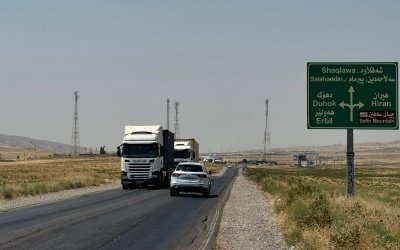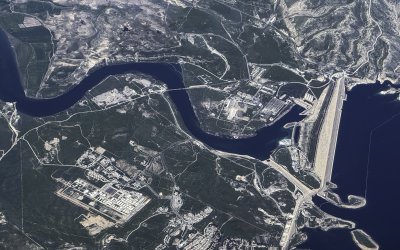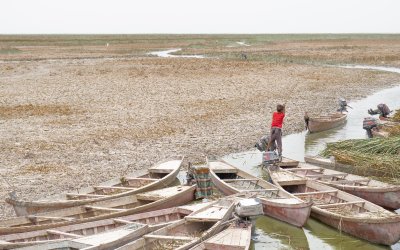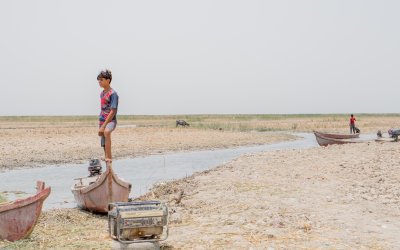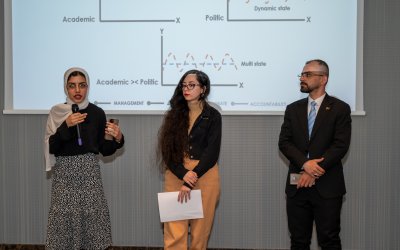Introduction
Thi Qar province is a major center for agricultural production in Iraq.[1] Farming plays a crucial role in local livelihoods, sustaining communities and providing 75% of all rural employment. The Iraqi government has initiated a number of policies to improve agricultural outputs. It has provided price support for wheat, subsidies and loans for essential equipment, and incentives for modern irrigation to increase output and promote sustainable water use.[2] Yet, data collected on crop production in Thi Qar—especially for strategic grain crops like barley and wheat—suggest that these policies have not achieved their stated goal of improving food security.[3] Though wheat production has remained fairly stable, cultivation of barley, which is a key crop for livestock fodder, has plummeted and become increasingly unviable. This policy brief explores the causes of these uneven outcomes and charts a way forward.
Current agricultural policies are largely out of line with the realities faced by farmers on the ground in three respects: First, policies do not account either for the costs of agriculture or price instability. Second, they do not integrate the impacts of water scarcity and climate change. Third, there is insufficient attention paid to the interrelatedness between distinct grain crops. In other words, policies that benefit wheat may harm barley, and vice versa. Correcting these shortfalls will require inclusion of farmers and rural communities into the policymaking process to ensure greater alignment between policy and implementation.
The current cost of cultivating one dunam of wheat in Thi Qar varies by region and farmers’ investment ranges from 250,000 to 435,000 Iraqi dinars. This cost is deemed equitable when compared to the state-specified price of 850,000 IQD per ton for first class wheat, with farmers earning no less than 350,000 dinars per ton, which is relatively advantageous for them.
- Dr. Hasan M. Ghubn, Ministry Official
This report takes a mixed methods approach, drawing both from agricultural statistics from various government sources (e.g. Ministry of Agriculture (MoA) and the Central Statistical Organization (CSO), among others) and interviews and focus groups with both farmers and government officials in Thi Qar.
Uneven Yields
Government data on the two main grain crops in Thi Qar—wheat and barley—indicate a clear divergence. According to data on cultivated area, yield per cultivated area, and total production between 2008 and 2023, wheat outputs have gradually increased according to each metric, whereas barley production experienced a troubling decline. This divergence is most starkly exhibited in the overall production in tons: In 2008, Thi Qar generated more than 104,533 tons of barley, which dropped to 6,084 tons in 2023. In contrast, wheat increased from 75,525 tons to 162,316 tons during the same period.[4]
Trends in Wheat and Barley Production: A Comparison from 2008 to 2023
Government Policies
This decline in barley production occurred despite two major government initiatives designed to boost the growth of grain crops: the Iraqi Agricultural Initiative (2008–2015) and the Iraqi Government Initiatives to Support Modern Irrigation and Mechanization in Agriculture (2011-present). The policies falling under these programs include:
- Price support for wheat: The government is a significant consumer of wheat, which it buys from farmers at pre-announced rates. This strategy provides a safety net for farmers, guaranteeing a minimum return on their investment and reducing the risk of price volatility on the private market.
- Subsidies and loans for essential agricultural costs: To decrease the cost of production for farmers, the government provides loans and subsidies for seeds, fertilizers, pesticides, and equipment. This effort is designed to make wheat and barley cultivation more economically viable for farmers.
- Supporting modern irrigation methods: Recognizing the role of technology in enhancing agricultural output and addressing water scarcity, the Iraqi government has established a number of initiatives to modernize irrigation infrastructure, with a focus on sustainable irrigation methods (e.g., center pivot irrigation systems) that consume less water. A total of 800 billion Iraqi dinars (approx. 612 million USD) was allocated to this program across Iraq in 2023-2024 alone.[5] To incentivize the use of these technologies, the government buys wheat from farmers who utilize modern methods at a slightly higher price than those who do not.
Taken together, the intention of these policies is to ensure price stability, lower the costs of agricultural production, and confront the growing challenge of water scarcity in the context of climate change.
Policy Deficits and Farmer Perspectives
Despite the intention behind them, these policies are not adequately aligned with the realities on the ground, especially in provinces like Thi Qar where stresses on the agricultural economy and the growing problem of water scarcity are most acute. Interviews and focus groups with farmers in Thi Qar painted a grim picture about the thin margins facing small and middle-sized farms. This means that government subsidies and loan schemes need to be carefully planned and implemented. Otherwise, the very policies intended to alleviate burdens on farmers might accomplish the opposite.
In a focus group in northern Thi Qar, one farmer noted that loans for agricultural equipment “were inadequately implemented and failed to consider our perspectives, and we struggled with financial obligations [for repayment].” Moreover, subsidies have not kept pace with costs and, in fact, have been significantly reduced. While farming costs for core needs (e.g., seeds and pesticides) have continued to rise, the MoA’s subsidy rate for registered seeds has decreased from 70% to 30%.[6] Cuts of this kind inject excessive instability into the cost-benefit equation for small and middle-sized farms, who must plan upfront costs each season on razor thin margins.
Some of the same financing inconsistencies are also present in government attempts to promote the adoption of modern irrigation technologies, which require long-term financial support for maintenance, upkeep, and technical oversight. Without them, farmers on thin margins may be compelled to sell off these systems during periods of low production to help pay off debts. Dr. Salih Alsalim of the Thi Qar Agriculture Directorate emphasized “the importance of counseling farmers on new irrigation techniques,” as well as “the need for continued help for maintenance and follow-up, particularly as many farmers [in Thi Qar] have sold their irrigation systems to other farmers in the western and northern areas of Iraq.”[7]
Loans for agricultural equipment were inadequately implemented and failed to consider our perspectives, and we struggled with financial obligations [for repayment].
- A farmer from Northern Thi Qar
The biggest problem in the government’s approach to agricultural support is the lack of attention paid to the interrelatedness of different grain crops. The MoA has touted the success of its wheat price support program. Ministry official Dr. Hasan M. Ghubn explained the net positive impact of this program on different regions in Iraq, including Thi Qar: “The current cost of cultivating one dunam of wheat in Thi Qar varies by region and farmers’ investment ranges from 250,000 to 435,000 Iraqi dinars. This cost is deemed equitable when compared to the state-specified price of 850,000 IQD per ton for first class wheat, with farmers earning no less than 350,000 dinars per ton, which is relatively advantageous for them”.[8]
This favorable pricing of wheat has likely contributed to the decline in barley production. Without government support, barley farmers facing price volatility have increasingly shifted to wheat cultivation. In focus groups, farmers expressed frustration about the lack of a fixed price for barley and the government's neglect of its cultivation, despite its critical role in livestock fodder. This has increased reliance on expensive fodder imports and poses a broader threat to Iraq’s food security—not just in grain crops, but also in livestock. These findings suggest the need for a pricing approach that accounts for the interconnectedness of grain crops. Supporting one at the expense of the other does not allow for a coherent and unified approach to food security.
While overall wheat production has increased, the data indicates problems below the surface, with other factors like climatic variability and market dynamics posing significant challenges. The total area for cultivated and harvested wheat has varied over time, but is trending lower. The reduction in cultivated land creates worries about the long-term viability of wheat production in Thi Qar. It is likely that policy execution has been uneven or has not adequately addressed the demands of wheat producers, forcing some to cease farming altogether. Despite these hurdles, the strong connection between cultivated and harvested areas shows little crop loss. This means that farmers in Thi Qar are using efficient techniques and benefiting from reasonably good growing circumstances.[9]
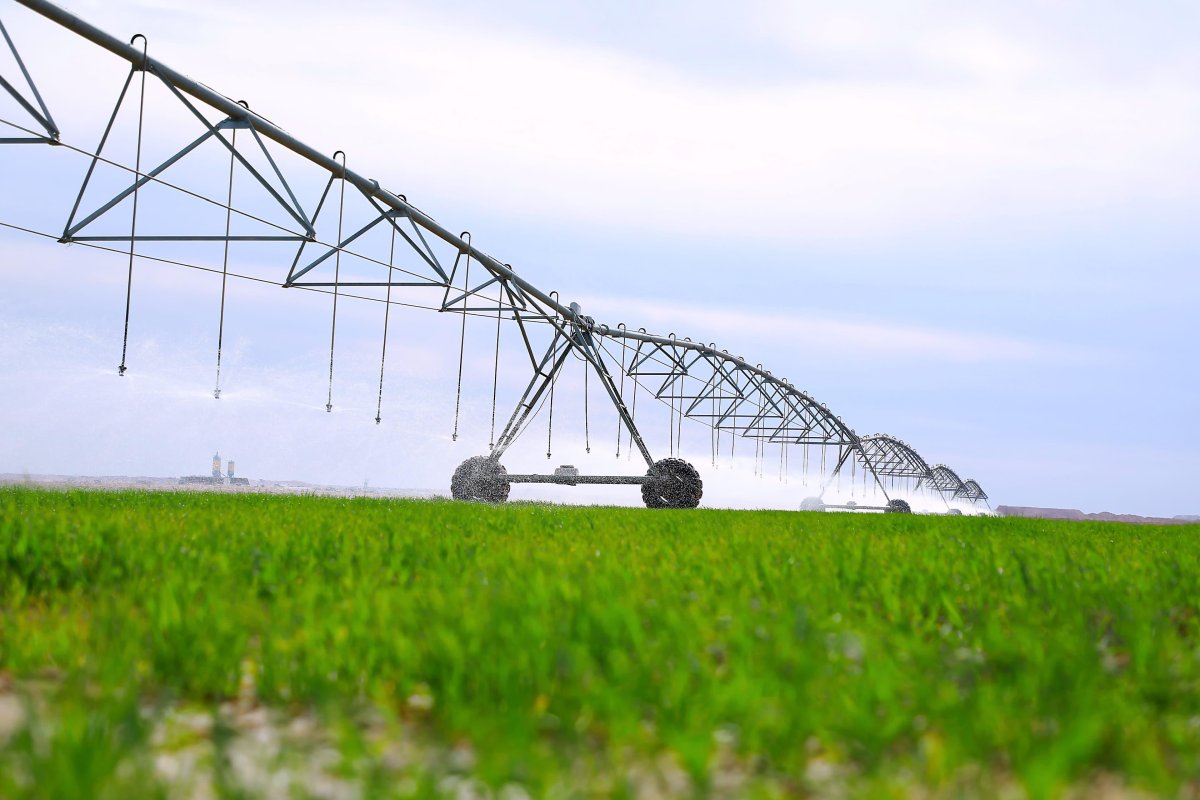
Centre-pivot Irrigation in a Wheat Farm in Al-Najaf Desert (Source: Ministry of Agriculture of Iraq)
A Way Forward
The Iraqi government's initiatives to enhance agricultural output in Thi Qar have had mixed results. This underscores the need for a planned and integrated approach to agricultural development. While the increase in wheat production is positive, the concurrent decline in barley production highlights the need for a more balanced policy. Moving forward, this report makes the following suggestions:
- Guarantee access to financial help for all farmers and focus on the requirements of small and medium-sized farms. Subsidy rates should be updated to keep pace with expanding agricultural expenditures. Additionally, financing schemes should be established with the unique limits experienced by small farmers in mind. Regarding pricing approach, the government should operate as a significant consumer of barley and purchase this grain from farmers at pre-announced prices. This approach offers a safety net for farmers, promotes barley cultivation, and delivers a minimum return on farmer’s investment by decreasing the risk linked with price fluctuation.
- Ensure long-term success in modern irrigation through ongoing financial, technical, and advisory support for farmers. While the government's efforts to promote modern irrigation technology are commendable, sustained financial and technical support for farmers is essential. This includes assistance with maintenance and repair and professional advice about how to use these technologies.
- Maintain food security through a balanced agricultural policy that considers the interconnectedness of all grain crops. Agricultural policy must acknowledge the interconnectedness of diverse grain crops. Promoting one crop at the expense of others could lead to unforeseen consequences and imbalances within the agricultural sector. A more holistic strategy is needed to ensure food security across all grain crops.
- Ensure the effectiveness of government policies by allowing for greater input to decision-making from farmers. Engagement from farmers and local agricultural communities in the policy-making process is crucial. This ensures that policies are grounded in the realities faced by farmers and are more likely to be effective in achieving their intended goals.
This article will be included in the eleventh edition of the Iraq Economic Review.




